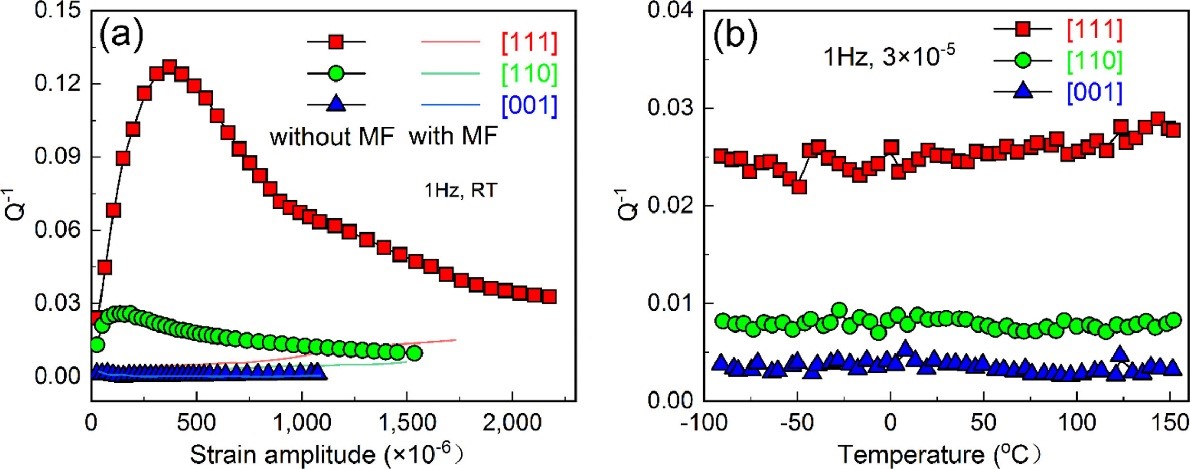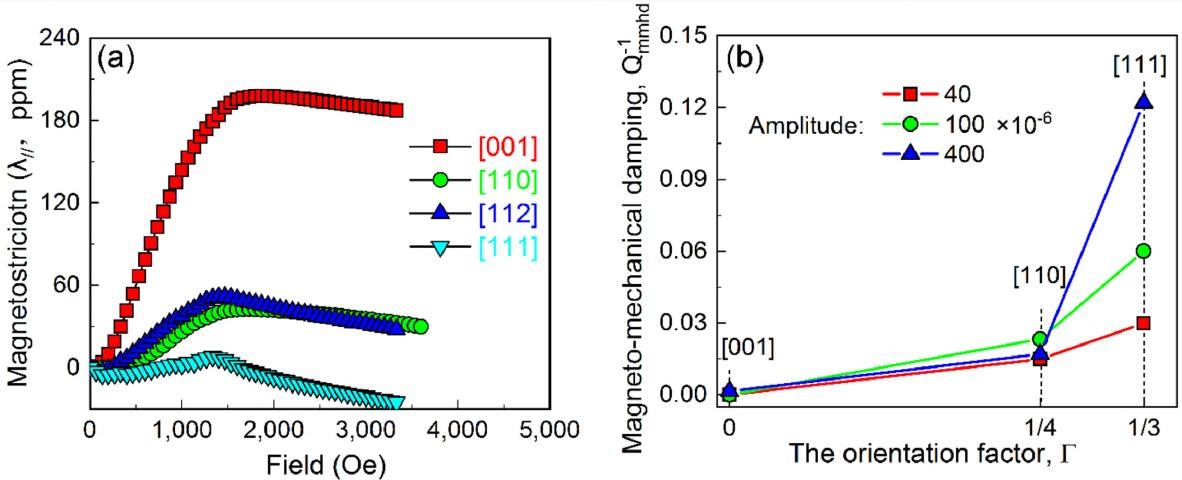
Fe-18 at.%Ga alloys with magnetostrictive coefficients up to 400 ppm are expected to have high damping based on the magneto-mechanical hysteresis damping (MMHD) model. However, in some studies of the magnetostrictive properties of Fe-Ga alloys, it was found that the magnetization curves of Fe-Ga alloys seem to be reversible, linear, and non-hysteretic curves, which indicates the damping is zero for Fe-Ga alloys. This contradiction makes it a challenge to explore the damping mechanism of iron-based high damping alloys and possible ways to increase the damping of the alloys.
Recently, a research published in Scripta Materialia revealed ultra-high anisotropic damping in large-sized Fe-Ga single crystals. The MMHD value, according to the SUN Meng, first author of the paper, is 2–5 times higher than the damping value of existing conventional ferromagnetic metals.
The research team is from the Institute of Solid State Physics, Hefei Institutes of physical science, Chinese Academy of Sciences.
They found, in this experiment, that the MMHD value of [111]/(110)-oriented FeGa single crystals reached an ultra-high 0.13 (SDC~0.82) under torsional deformation conditions, showing a strong orientation dependence.
Combining the equivalence of stress and magnetic field on the motion of the domain walls (DWs) and the in-situ observation of the DWs motion under an applied magnetic field, they confirmed that the high damping of Fe-Ga single crystals originated from the irreversible motion of the 90° DWs under alternating stress, and the MMHD was analyzed as a function of the orientation factor and the saturation magnetostriction coefficient in the [100] direction.
The ultra-high damping effect in Fe-Ga alloys was achieved for the first time in this study. They also explained its microscopic mechanism. The most important is that the obtained preparation technology of large-sized Fe-Ga single crystals had important engineering application prospects in microelectronic magnetostrictive devices and vibration reduction of aerospace precision instruments.

Fig. 1. The variation of damping capacity with strain amplitude (a) and temperature (b) for [001]-, [110]-, and [111]-oriented single crystals at 1Hz. (Image by SUN Meng)

Fig. 2. (a) Magnetostrictive curves of [001]-, [110]-, [111]-, and [112]-oriented single crystal samples; (b) Plot of MMHD versus the orientation factor. (Image by SUN Meng)